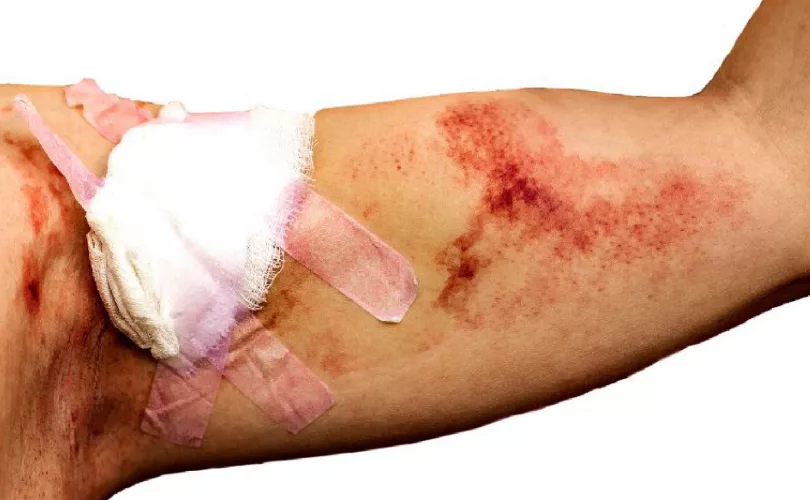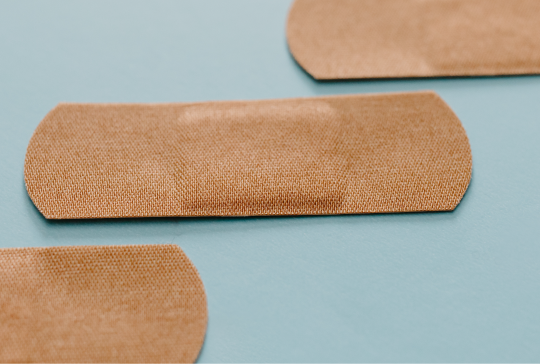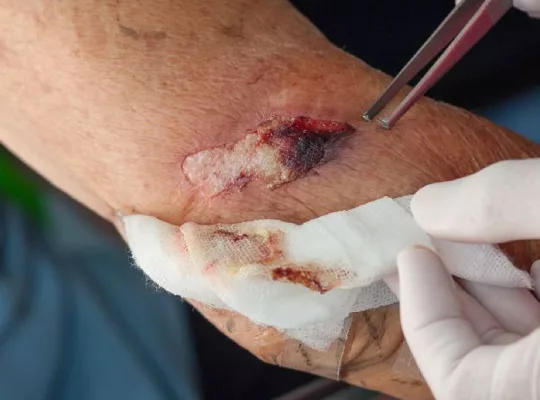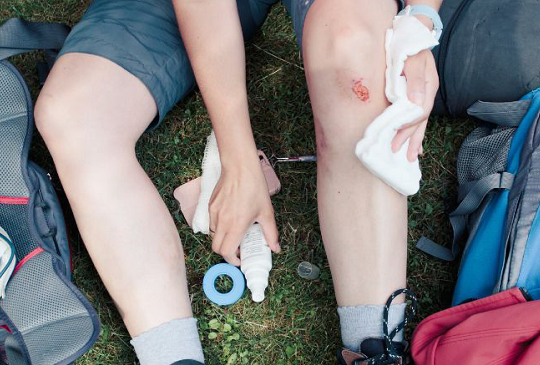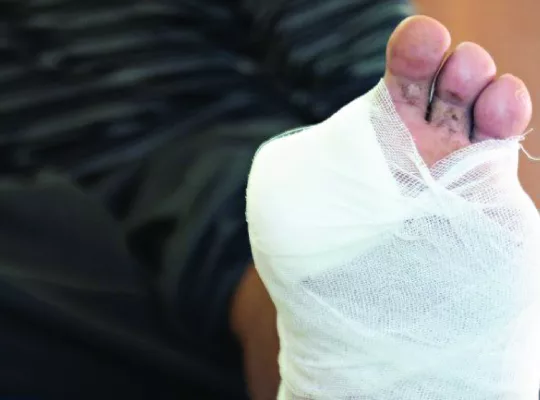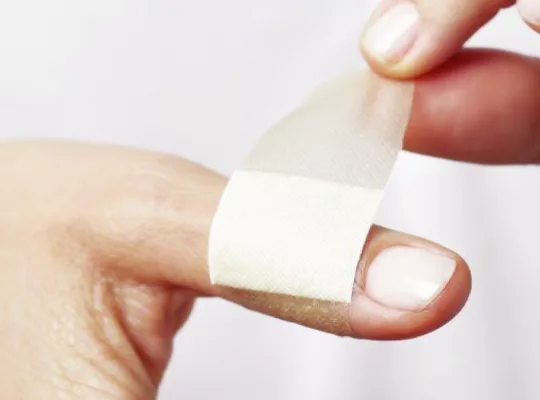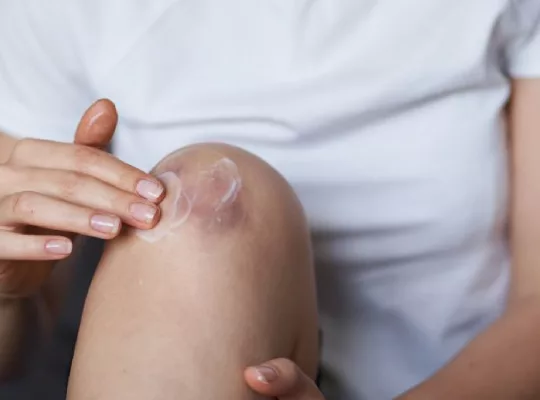Leaving gauze in a wound can lead to serious complications. When gauze is not removed properly, it can cause infection, delay healing, and even result in severe discomfort. Patients often experience irritation and increased pain, which can be signs of something going wrong. To prevent these issues, using the right gauze dressings is crucial
One common issue is the risk of infection. Studies show that retained gauze can introduce bacteria, leading to infections that require further medical intervention. This problem can be easily overlooked, especially if the wound is covered without checking for complete gauze removal.
If you’re wondering what to do in this situation, it’s important to know the signs to watch for and when to seek help. In this article, we’ll explore what happens when gauze is left in a wound and provide clear steps on how to handle it properly.
What Happens If Gauze Is Stuck On A Surface Wound?
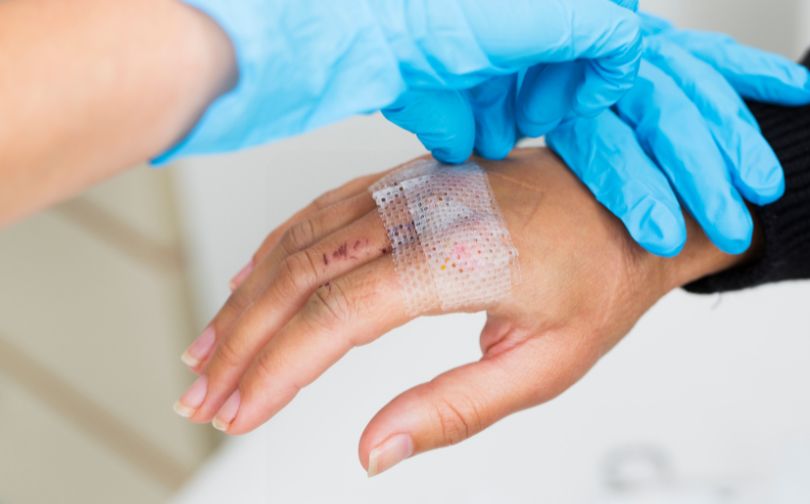
If some gauze has become stuck on a wound, you will need to ensure that you remove it. Removing a dressing in this way can be very painful, and it can result in removing new skin cells in an attempt to heal the wound.
To remove the gauze, you may want to soak this in olive oil for between 30 and 60 minutes before you attempt to remove it.
Should You Pull Gauze Out Of A Wound?
If the gauze is stuck in a wound, you will want to pour water over the bandage before you begin to remove it.
This will get the bandage wet, meaning it will be much easier to remove the bandage. If you pull the gauze out of a wound while it is stuck, it may reopen the wound and cause it to start bleeding.
What Should You Do if the Gauze Is Stuck to a Wound?
When gauze sticks to a wound, it must be removed carefully to prevent further tissue damage. Follow these steps:
- Moisten the Gauze: Use sterile saline solution or clean, lukewarm water to soften the gauze. Moistening helps release the adhesion without damaging the wound.
- Apply Lubricant: Gently apply a small amount of Vaseline to the edges of the gauze. This reduces friction and helps loosen any sticking points.
- Use a Warm Compress: Apply a warm, damp washcloth over the gauze. This softens any dried fluids and eases removal by loosening the gauze.
- Slow and Gentle Removal: Peel the gauze edges slowly. If resistance occurs, add more moisture and wait a moment before attempting removal again.
- Consider Using Steam: Let steam from a hot shower fill a room, sitting nearby to allow moisture to help loosen the bandage.
- Avoid Dry Techniques: Never remove gauze without moistening it first. Dry removal can cause pain and damage healing tissue.
- Use Proper Tools if Needed: Sterile tweezers or blunt-end scissors can help carefully lift or trim gauze without aggravating the wound.
What Happens If Gauze Is Left In The Body After Surgery?
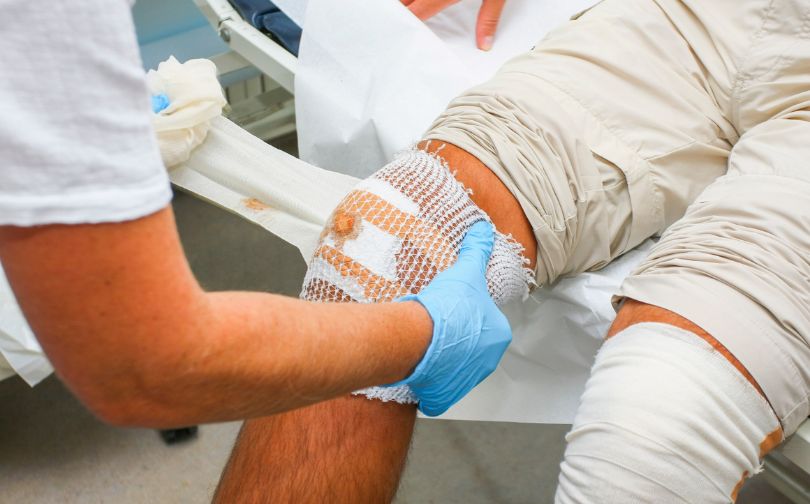
Any foreign objects that are left inside a patient after surgery can trap bacteria against the healing tissue, causing huge risks. Sometimes, medical gauze is left inside a patient following surgery.
If left untreated, this gauze can accumulate bacteria which will lead to an infection. This infection will spread through the body, resulting in severe illness.
If you are recovering from surgery and you notice drainage from the incision, then you will need to seek medical attention immediately.
If there was any gauze left inside your body during the surgery, you will experience an overall decline in health. You will likely experience severe pain in the area where you had the surgery.
As gauze is made out of flat cotton, your body will not be able to absorb it. This means that it will need to be removed surgically.
How Often Should You Change Gauze On A Surface Wound?
Once you have removed the initial bandage, you will need to change the gauze fairly often. This will depend on the nature of the wound.
You will need to change the gauze as often as needed to ensure that it does not end up soaked from the wound.
This can range from one to four times per day. If your bandage is wet when you change it, then you will want to start changing it more often.
Do Wounds Heal Faster If They Are Uncovered?
In most cases, you will want to cover your wound. This is because it is very important to prevent any infection from occurring in the wound.
If you leave a wound uncovered, it may dry out the cut, slowing down the healing process. If your wound is caused by a burn, it is sometimes better to leave this uncovered.
This is not the case with all cuts and injuries, though.
How Can You Tell If A Wound Is Infected?
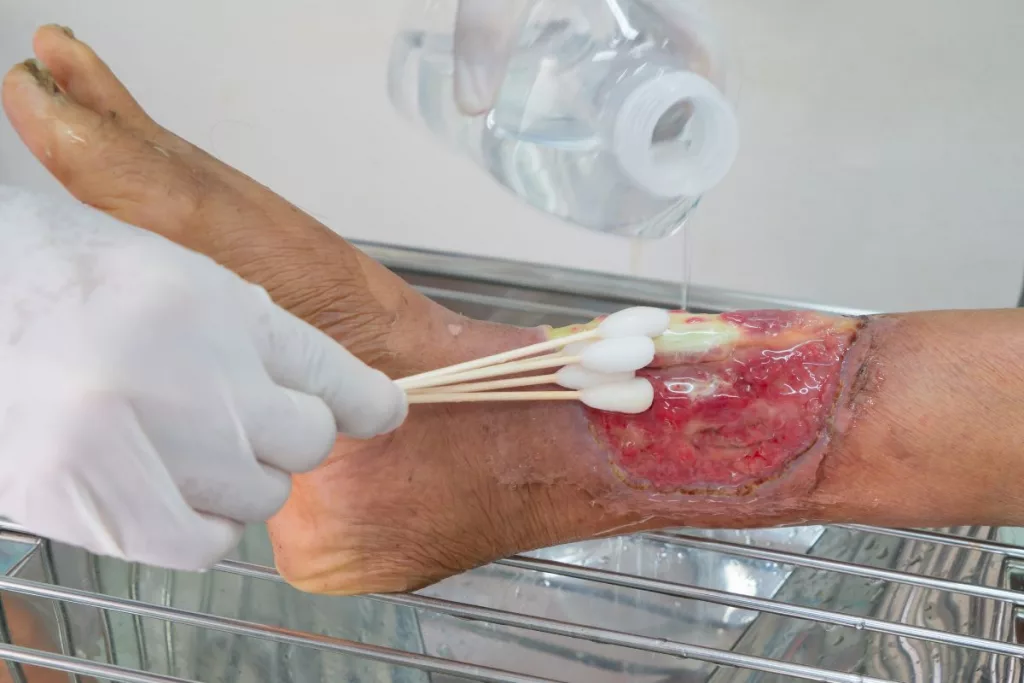
If a wound has become infected, the infected area may show signs of infection in multiple different ways.
- Become more painful
- Look red on the skin and feel hot to touch
- Look swollen
- Ooze pus
If you have an infection that continues to spread, the redness will continue to spread to more areas of the skin. You may also feel very unwell, have a temperature, and have lots of aches and pains.
What Should You Do If You Have An Infected Wound?
If you think you have an infected wound, you should ensure that you get medical attention immediately. They may take a sample of the discharge to check whether the wound is infected.
The swab that is taken from your wound will then be sent to the lab where they will determine the type of germs that are causing the infection.
You will need to ensure that you gently clean the wound and keep an eye on it for signs of infection.
If you have a small cut, you should keep an eye on it. Keep this clean by using an antiseptic cream or bathing it in warm water. Ensure that if the wound is beginning to ooze, or the redness is spreading, you seek medical attention.
How Do You Treat An Infected Wound?
If you have an infected wound, it is usually treated using high-quality antibiotics. They are used to treat the infection and stop it from spreading.
In some cases, an antibiotic cream will be used. In other cases, an oral antibiotic may be needed.
Why Do Some Wounds Become Infected?
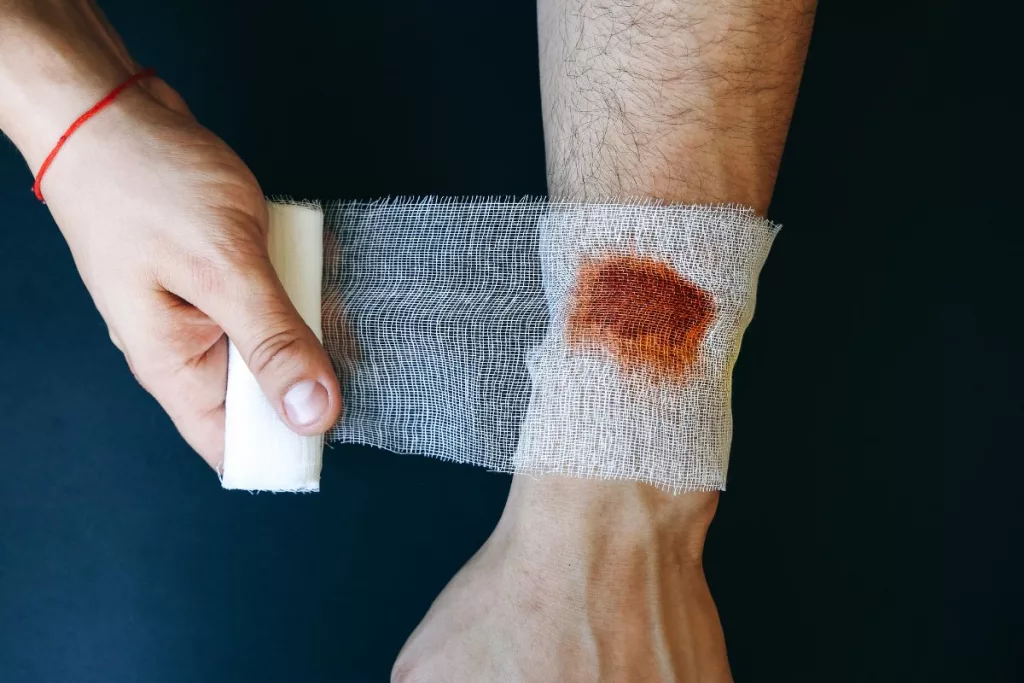
Wounds usually heal well if they are kept away from any germs. Lots of germs live on our skin or in the environment around us.
Usually, our skin acts as a barrier to these germs. However, if the skin is broken, these germs can find their way into the tissues underneath our skin.
If this occurs, the tissues will become sore and swollen, and they will be much less likely to heal.
Open wounds are much more likely to develop infections than closed wounds as the germs can easily enter the body.
Certain circumstances increase the chances of a wound becoming infected.
- Diabetes
- If the wound was caused by a dirty object
- If there gauze is left in the wound, such as gauze that sticks to the wound, it can lead to complications.
- If the wound contains another ‘foreign body’, such as parts of the things that caused the injury
- Size and depth of the wound
- If you are overweight
What Are Complications Due To An Infected Wound?
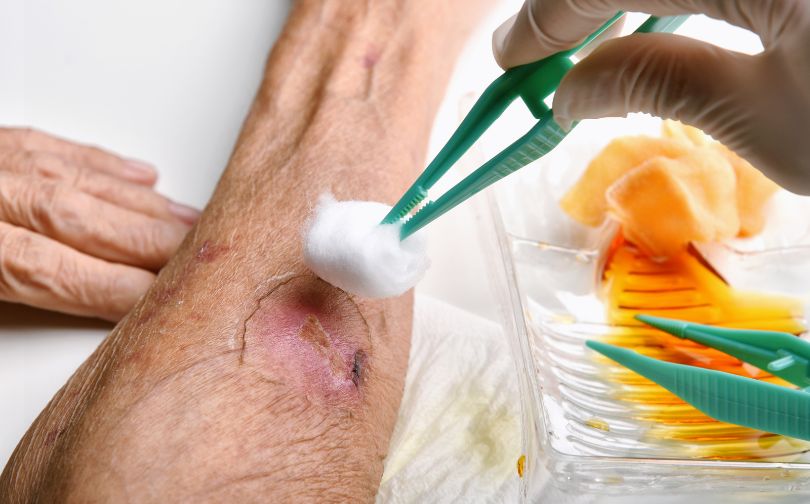
If a wound that is infected is not treated immediately, the infection can spread and require surgical intervention going forward. Whether this infection is started by some gauze being left in a wound, or from another cause, the infection can sometimes spread.
The surrounding skin will then become red and sore. At this stage, the infection may end up spreading deeper into the tissues underneath the skin.
This is known as cellulitis. The infection can sometimes spread into your blood which will make you feel very unwell.
If this happens, you may experience sepsis, a life-threatening infection. If you can see any signs of sepsis, you should seek medical help immediately as it is considered a medical emergency.
If you have a skin infection, such as impetigo, or an abscess, this indicates that the infection has not cleared up.
Final Thoughts
So, there you have it! If you were wondering what happens if gauze is left in a wound, you should now have all the information you need on this topic.
In this ultimate guide, we have explored the possible outcomes of gauze being left in a wound, including infection.
FAQs
Can Leaving Gauze in a Wound Cause Long-Term Complications?
Yes, leaving gauze in a wound over time may lead to complications like granuloma formation and chronic inflammation. While the gauze helps initially with healing, it can cause scarring or infection if not removed properly, potentially requiring surgical intervention for resolution.
Is It Safe to Remove Gauze from a Wound by Myself?
Removing gauze on your own is possible, especially if soaked to ease removal. However, risks include damaging the wound or increasing pain. If the gauze is embedded or removal is difficult, seeking medical attention is advisable to avoid further complications.
What Legal Implications Exist for Healthcare Providers Who Leave Gauze in Wounds?
Leaving gauze in a wound can lead to malpractice lawsuits, as it’s classified as a preventable error. Healthcare providers could face legal action for negligence, especially if complications arise that cause harm to the patient.
What Preventative Measures Can Be Taken to Avoid Leaving Gauze in Wounds?
To prevent this issue, regular dressing changes and careful inspection are essential. Both patients and healthcare providers should ensure that gauze is completely removed. In medical settings, strict surgical protocols should be followed to account for all materials used during procedures.

